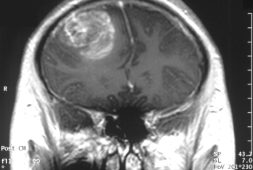Ultra-Precise Lasers To Remove Cancers Without Damaging Healthy Tissue Are Developed By Scientists

Cancer is the second leading cause of death globally, and in 2018 was responsible for 9.6 million deaths. In the US, ⅓ of the people diagnosed with cancer will die. Sad, but true. Usually, if diagnosed early, cancer may be potentially treatable. There are several ways of treating cancer, which include chemotherapy, hormone therapy, radiation therapy, stem cell transplant, and surgery, to name a few.
Scottish scientists in Edinburgh’s Heriot-Watt University have developed a system of lasers that melt away cancer cells without damaging normally healthy cells. The new treatment relies on a series of pulses that are short enough to melt the cancer cells, but too short for the heat to transfer to neighboring healthy cells, a major problem in past work in the field.
Professor Jonathan Shepherd led the project, and told Sky News it was successful in eliminating colorectal cancer cells in lab tests. The Heriot-Watt University is carrying a long tradition of Scotish medical advances nearly a hundred years after physician Alexander Fleming isolated penicillin. The research in laser technology was funded by a $1.6 million grant from the Engineering and Physical Sciences Research Council.
Professor Shepherd said, “We proved in the lab that our laser system can remove cancer cells in a way that restricts damage to the surrounding, healthy cells – within the width of a human hair.” He continued, “ We’re building on our understanding of lasers in colorectal cancer surgery towards clinical application, and working on adapting it for brain, head, and neck cancers, where it could have huge benefits for patients.”
The technique fires the laser in pulses measuring about one trillionth of a second, preventing the transfer of heat to surrounding tissues. Quite remarkable actually.
The timeline for further R & D is three years, before the device is ready for clinical tests. This will also include research into an optical fiber-based device that can target and destroy cancer cells three times smaller than the ones the laser can remove. However, these two light-related therapy projects are not the first pursued by the Heriot-Watt University. Just late last year, it announced that it had secured a $8.3 million grant to investigate deep ultraviolet light therapy in the practice of germicide. Deep ultraviolet light does not occur on Earth, but it has shown to be able to kill germs, including those that have built up antimicrobial resistance.
“Some wavelengths of ultraviolet light are known for their germicidal properties, but can cause cancer in human tissues. That’s the problem we’ll solve,” explains professor Robert Thompson of the university. “We will develop technologies that generate ultraviolet light at just the right wavelength, where the light remains germicidal but without the harmful effects. We’ll also develop technologies to deliver this light precisely, such as optical fibers to transport it into the body without causing further harm,” he adds.
Ultraviolet radiation is something astronauts and spaceship builders have to constantly keep in mind, for even a brief exposure to it beyond our atmosphere can lead to cancer and other diseases. Just imagine the heat (and radiation) of the sun when we are at the beach…how much more damaging is it up in space.
Light therapy may not be completely new, but what the Heriot-Watt team has been doing is surely revolutionary and remarkable. Soon, cancer cells may be more easy to kill and get rid-off. Science is really astonishing, you never know what else scientists will discover in the near future.



